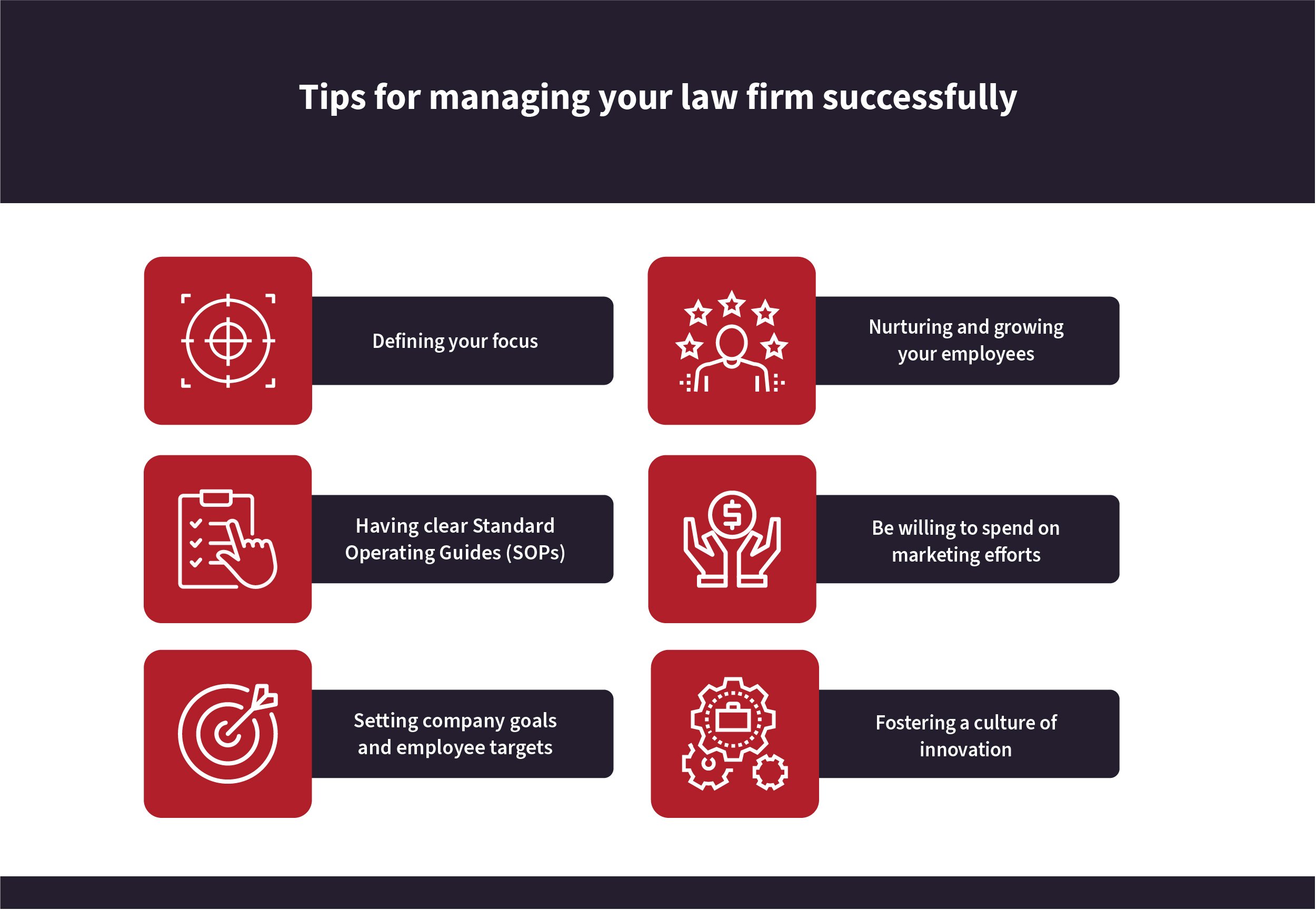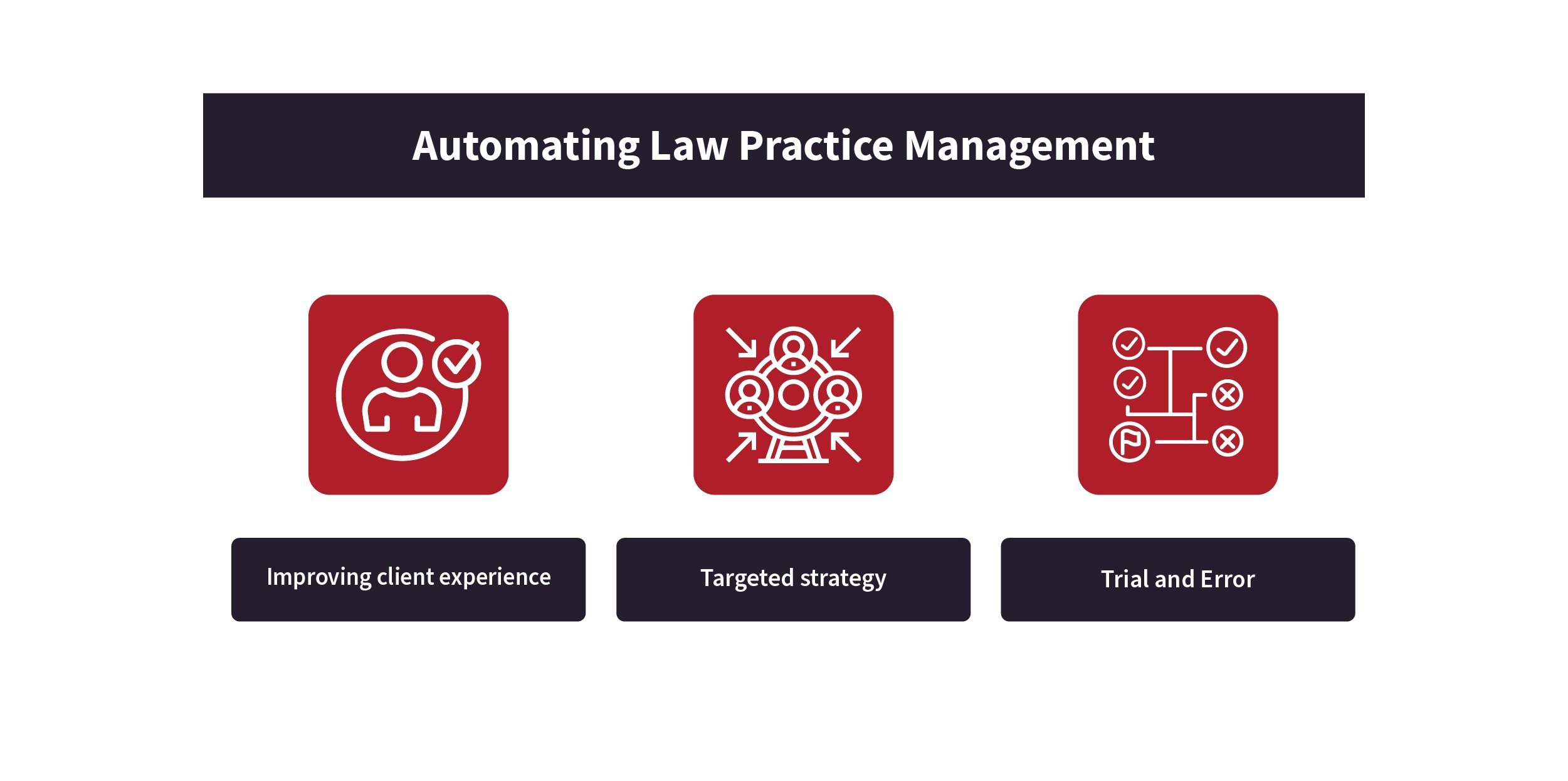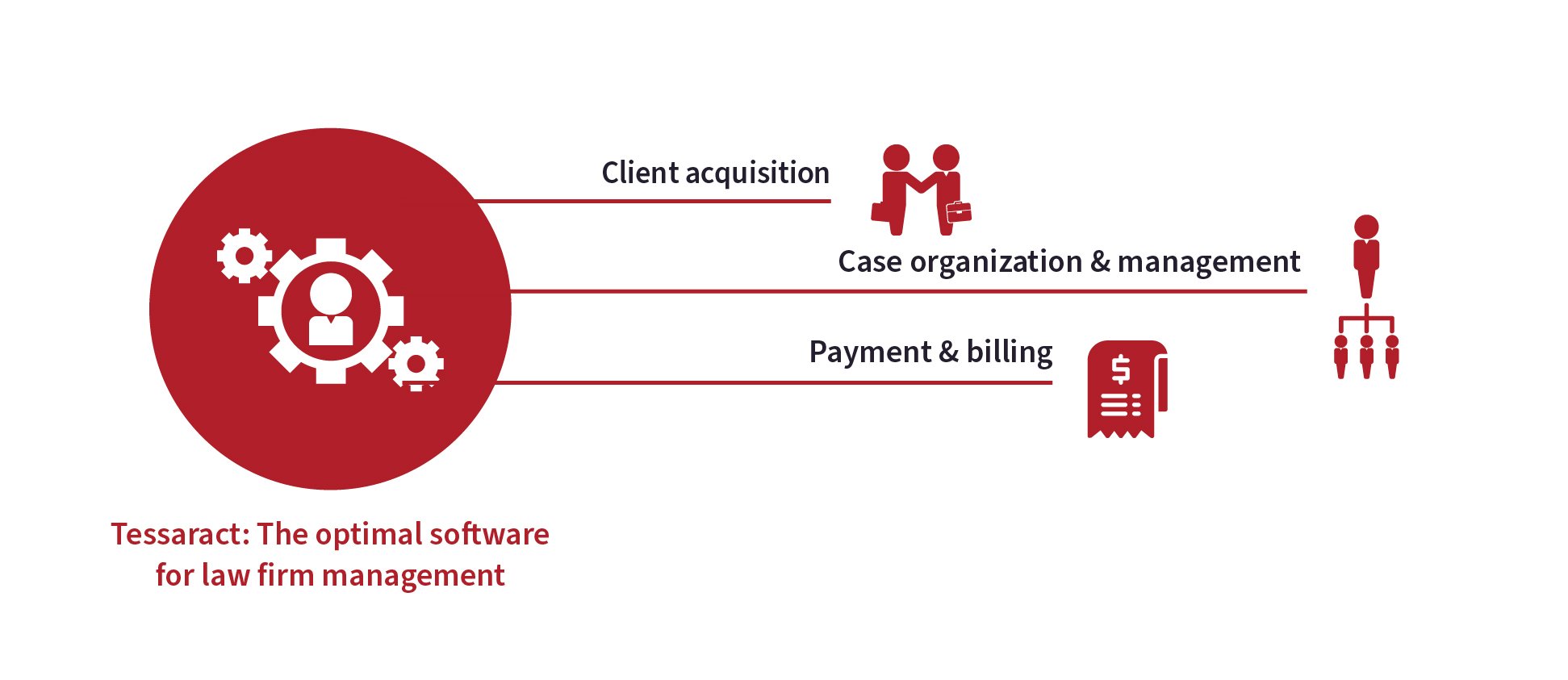Managing a law firm is no easy task.
Law firm management is a constantly evolving practice, such as the impact of the COVID-19 pandemic on digitalisation over the past few years. Regardless of firm size, lawyers have to foster a high performance culture that focuses on agile growth to build an adaptive yet growth-focused law firm of the future.
Law firm management entails the business aspect of running a law firm. This can include marketing, client relations, accounting, staffing, administrative work and the actual practice. Effective law firm management is more than just practising law. There is no one-size-fits-all solution to managing a law firm. Still, legal teams that constantly reimagine solutions to improve efficiency and savings have the upper edge in growing their practice.
Law firm structures
There are a few main positions in every law firm, with different levels of authority in the hierarchy. Here’s a quick summary of the various positions!
- Managing Partners are at the top of the hierarchy and handle all firm's business operations. Their responsibilities typically include day-to-day handling of activities, managing company finances, and improving the productivity and performance of their team members. Managing partners usually own all or part of the firm.
- Partners (also known as Shareholders) sit below the managing partners and often own shares in the firm. This means that they earn a share of the firm’s overall profits on top of their salary. They are typically the most experienced lawyers and attorneys in the firm.
- Associates are lawyers and attorneys employed by the firm but do not own any shares within the firm. Partners and shareholders often review entry-level associates' work. As they rise through the ranks over time, they gain more privileges and responsibilities in the firm.
- Marketing Directors focus on business development, helping to bring in new clients for the firm. They also help build a positive business image and good branding for the firm, assisting in its growth and expansion.
- Contract Attorneys are lawyers who are not employed directly by the firm but outsourced during busy periods. They are typically contracted hourly rather than engaged for a fixed fee during entire projects. Yet, they tend to work on projects from the start to the end.
- Paralegals support attorneys with their cases, meaning they have a tremendous practical knowledge of the law. Being in a more administrative role, paralegals provide support by preparing legal documents, researching cases, and providing price quotes to clients. They may also help lawyers draft reports and prepare for trials. Additionally, they may also interview witnesses and go into court themselves in some cases.
- Law clerks are often law students or people hoping to gain experience in the law industry. Their primary role is to help associates with their cases, and they are usually assigned tedious and time-consuming work.
- Legal secretaries have a more administrative role in the firm, such as keeping the office organised, filing documentation and keeping records on clients' wealth and cases. They may also assist attorneys and paralegals with administrative work.
Tips for managing your law firm successfully

Defining your focus
Focusing on a targeted practice area enables you to hone your practice and signifies to potential clients and other law firms as an expert in your jurisdiction. Specialising as a boutique law firm in a niche legal area such as family law, civil litigation, or personal injury will allow attorneys to grow in experience, knowledge and networks. Being a master in a specific area makes it easier for legal practitioners to be well-seasoned in solving problems and providing quality service.
With a specialised practice area, your law firm can build a name for itself in that particular focus area, working smarter to build trust among clients and help to grow your future client base.
Having clear Standard Operating Guides (SOPs)
For law firms, having clear SOPs for employees to follow is vital to inform employees on how to go about their daily tasks. Having an SOP to follow would reduce the time needed for new employees to learn the ropes and ensure a uniform structure. For example, with a clear guide on preparing a case report, law firms can ensure that all their reports follow the same format. This would help greatly when referring back to past case reports, since they would all follow the same structure and make it easy to sift out the necessary information.
Additionally, there would be clear examples for future employees to follow so that the case reports can be documented easily. It would also help to make searching up past case reports much more efficient if clear categories or tags are used to segregate the various case reports, such as “Divorce” cases.
Setting company goals and employee targets
What are the goals of your law firm? For your employees to feel motivated at work, it is essential to provide them with a goal that they can work towards. Most law firms would assert that increasing clients, revenue and profitability are their key targets. For example, this may include expanding the firm’s profits or the number of clients by a certain percentage at the end of the financial year. With a centralised goal and a precise measurement of success, your employees will feel more unified in working towards the same purpose and can even help to build better teamwork. To measure the effectiveness of your law firm in meeting these goals, set aside time to analyse vital performance metrics regularly.
Additionally, it would be good to set individual Key Point Indicators or Objectives and Key Results (KPI and OKR) for each team member to have a clear idea of what constitutes good work performance. These KPIs would also help set the standard regarding future promotions or pay raises and align your employees’ expectations with the firm’s. Some useful tips to help you with setting goals would be to establish weekly workplan meetings, utilising the pareto distribution, or even setting project objectives.
Nurturing and growing your employees
By investing time and money into your employees’ careers, you can show them that you are willing to help them grow in their professional development. Some ways could include sending your employees for training courses, having bonding events and checking in regularly to ensure that they are coping well with their workload. This would help your employees see that the firm cares about their well-being and career outlook and could motivate them to achieve more excellence in their careers. This would also be good in the long run as your employees would grow with the firm and may even cultivate strong company loyalty such that they would be willing to stay on even in tough times for the firm.
Be willing to spend on marketing efforts
Sometimes, it’s not about how good your firm’s services are – it’s about getting your firm’s name out there. With good marketing, your firm can become more well-known among general consumers who may require legal services in the future. Additionally, marketing your firm using past testimonials from clients would help to build trust among consumers. This could help convince your future potential clients that your firm is the right choice for their legal needs.
Although marketing efforts can be costly, it is often well worth the money. It helps to publicise your firm, which is essential when you want to build your firm’s reputation in the market and gain a more significant customer base.
Fostering a culture of innovation
Law firms need to be innovative, visionary and committed to pursuing agile growth through novel business models. Thinking about the broader picture and outside the box develops new business models such as creating custom efficiencies for repeated and simultaneous cases in large-scale litigation. Adopting innovative digital practices ensures fewer mistakes for a litigator who has to search and review issues with large amounts of data with millions of records.
Moreover, innovation is a team effort. Even though innovation may be implemented from the top-down, fostering it among all the firm’s professionals is key to making it a culture. From administration to attorneys, every professional has a vital role in suggesting opportunities to change and driving innovation.
Automating Law Practice Management
Undoubtedly, digital technologies play an indispensable role in driving innovation and transformation in legal practices, making law practice management less of a pain. The past few years have seen the practice of law changing to deploying data to boost decision-making processes and enhance services for clients. Combining legal process management, technology, and the labour model has helped to drive innovation and streamline internal operations for legal practices.
The rise of remote work also means that many legal professionals will not return to the office as frequently as in pre-COVID times. Hence, secure cloud-based applications like Tessaract, designed with law firms in mind, have made remote work more accessible. With an increasing reliance on technology such as case and document management systems, apportionment billing, and custom form builders, modern law firms have to optimise and improve their internal processes constantly.
An excellent law practice management software also ensures effective collaboration, acting as a digital axis that connects projects and tasks and assigns the proper documents and emails to client cases. Finding the right practice management software that complements your practice jurisdiction is essential to meeting your individualised legal needs.

Improving client experience
Technology plays an imperative role in ensuring an improved client experience. The need for digital corporate tools that enables both clients and legal professionals to stay aligned on the same page is extremely critical. For example, choosing a reliable tool to hold virtual meetings with clients can help you manage your client relationships better. Furthermore, real-time data sharing such as digital signing software and cloud-based case management systems also strengthen client interactions through the adoption of digital technologies.
Targeted strategy
At the same time, not all cases or law firms require the mass adoption of technological tools, making it important to balance the returns of investment with the use of these automated tools. Hence, before automating any internal processes within your firm, you need to determine the end goals and purposes of your law firm’s needs. Weigh the value of automating tasks for both you and your clients – will you be able to deliver better results with these tools? Brainstorm on the best ways to complete tasks both efficiently and accurately for your law firm.
Trial and Error
After deciding on a software, be sure to trial and conduct planned reviews to determine whether the practice management software is the right fit for your law firm. Has automating certain tasks and workflows indeed resulted in more time saved on repetitive tasks and an increase your productivity? The overarching purpose of adopting digital technologies is to value add to your legal practice and improve client experience, so it’s critical that you constantly evaluate its effectiveness. Even if the software seems like a perfect fit for your legal practice at the moment, you should always re-evaluate your existing solutions as the ever-changing nature of technology may enable you to implement more optimised processes.
Tessaract: The optimal software for law firm management

Tessaract has helped countless lawyers improve the success of their practice through superior case organisation, improved client acquisition, increased productivity, and a stronger bottom line for billing matters. Our leading law practice management solution has proven successful for a wide range of firms with positive results from all our clients. Whether you're just starting your practice or you've been in business for years, Tessaract can help you increase your practice's growth.
Find out how Tessaract has streamlined operations for That.Legal to achieve agile growth and resource efficiency in our case study here. Request a demo today to power your firm with the flexibility and robustness of Tessaract practice management software.
